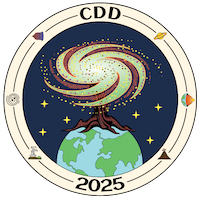Orateur
Description
The Alboran-Al Hoceima region is a tectonically complex active zone, marked during the last decades by several major earthquakes (1994, 2004, 2016) and series of seismic swarms that reveal diverse triggering mechanisms. These mechanisms are driven by a combination of evolving mantle-lithospheric processes, tectonic forces, and fluid interactions. The prolonged 2021–2022 seismic swarm, marked by a maximum magnitude of M 5.3, exhibited a distinct fluid-driven behavior. Our integrated analysis, using double-difference relocation techniques (HypoDD) with a regional seismic velocity model (CSEM Iberia 2019), applied to seismic bulletins from both sides of Alboran sea, reveals clear migration patterns. The diffusivity analysis indicates a rapid initial episode, with values reaching approximately 14 m²/s, followed by a decline to more stable and slower migration rates ranging between 3.47 and 8.10 m²/s. The swarm activity was primarily clustered along the southern tips of the Alboran Ridge and the Al-Idrissi Fault Zone, extending southward offshore where it connects east of Ras-Tarf The spatial distribution of seismicity also suggests a notable linkage to a newly identified fault F1. Focal mechanism solutions from key events, indicate transtensive strike-slip faulting. The geometry of seismicity, spanning depths from 0 to 50 km, shows a strong correlation with low-velocity anomalies, shallow Moho depths, and the presence of recent Neogene volcanic structures, support the involvement of mantle-derived fluids in fault reactivation. This swarm contrasts sharply with earlier seismic sequences, including the 2016 (Mw 6.4) and the 2004 Al Hoceima (Mw 6.3) earthquakes, whose larger-magnitude mainshocks reflect more mature fault behavior. The spatial progression of seismicity, shifting from burst-like to prolonged activity reveal varying underlying driving mechanisms, illustrates the movement of deformation fronts. These variations point to a regional transition towards a distributed plate boundary, with swarm behavior acting as a proxy for lithospheric fragmentation. The recurrence of distinct swarm types over two decades provides valuable insights for understanding seismic cycles in the Alboran region.
| Speaker information | PhD 2nd year |
|---|

